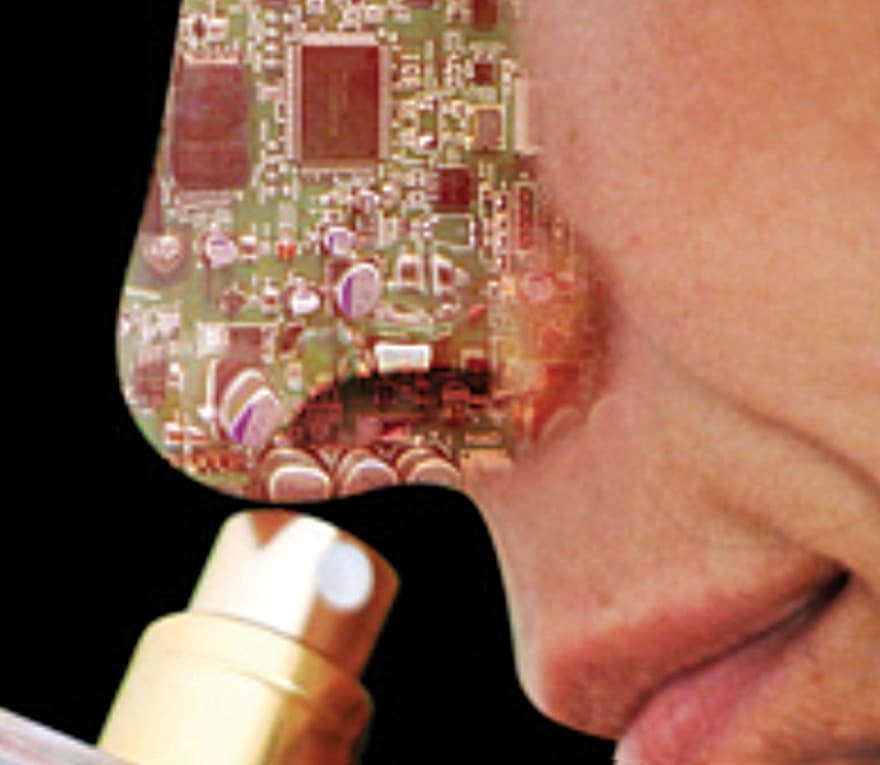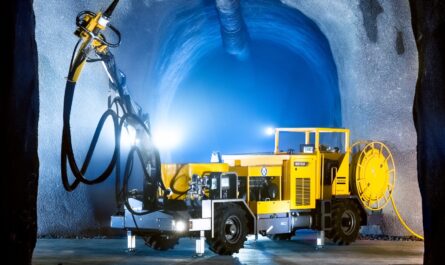What is an Electronic Nose?
An electronic nose, also known as e-nose, is a device that mimics the human olfactory system. It helps in detecting and identifying chemical vapors through sensors. Just like how our nose detects smells, an electronic nose uses an array of chemical gas sensors with partial specificity and sensitivity. It generates electrical signals from sensing different vapors and gases. Complex algorithms are then used to analyze these signals and determine the type of odor being sensed.
Working of an Electronic Nose
The basic working of an electronic nose involves three key steps:
– Sensing: An array of chemical sensors placed inside the e-nose detects the presence of specific gases or volatile organic compounds in the air. Each sensor responds differently to different chemicals.
– Signal Processing: The sensors transmit signals proportional to the detected chemicals to a microprocessor. The signals are then processed and analyzed using pattern recognition algorithms.
– Identification: Based on the processed signals, the microprocessor compares them to stored reference profiles to identify and quantify the chemicals. It then determines the type of odor and provides a readout.
Advantages of Electronic Noses
– Fast Detection: Electronic Noses can detect odors instantly and provide rapid analysis even in complex mixtures. They are much faster than human sense of smell.
– High Sensitivity: E-noses can detect trace amounts of chemicals down to parts-per-million or even parts-per-billion levels. They have a very low detection limit.
– Objective Analysis: Unlike human nose which can get desensitized or biased, e-noses provide an objective, consistent and repeatable analysis.
– Non-Invasive Detection: E-noses do not require taking physical samples. They can remotely detect odors without direct contact.
– Adaptability: The sensor arrays and algorithms in e-noses can be tailored for specific applications like disease diagnosis, food testing, environmental monitoring and more.
Applications of Electronic Noses
Food Quality Testing
Electronic noses are widely used to check the quality and freshness of various food items like meat, seafood, fruits and vegetables. They can detect spoilage and contamination issues quickly by identifying odor signatures of bacteria or undesirable chemicals. This helps maintain food safety and quality standards.
Agriculture and Horticulture
In agriculture and horticulture, e-noses help monitor crop conditions, detect plant diseases at an early stage by identifying disease-specific odor profiles. This facilitates timely treatment. They are also used for qualilty checking of stored grains and monitoring produce shipments.
Medical Diagnostics
The burgeoning area of electronic nose applications is medical diagnostics. Researchers are developing e-noses that can detect diseases like lung cancer, tuberculosis or urinary tract infections from odors of breath, skin and other body samples. Some studies have shown promising diagnostic capability of e-noses.
Environmental Monitoring
Electronic noses effectively monitor ambient air quality by identifying various industrial and vehicle exhaust pollutants. They are deployed at sensitive public areas like schools, hospitals to detect chemical or gas leaks instantly. E-noses installed at waste treatment plants also monitor odor emissions.
Industrial Process Control
Many manufacturing industries rely on electronic noses for process and quality control. They monitor chemical processes to detect unwanted byproducts or impurities in real-time. E-noses implanted in processing equipment alert technicians about deviations enabling corrective actions. This improves process efficiency and product consistency.
Future Scope of Electronic Noses
With continued advancements in sensor technologies and machine learning algorithms, the capabilities of electronic noses are expanding. Miniaturization of e-nose systems enables portable devices for on-site analysis. Integration of e-nose sensors with smartphones opens up possibilities of developing personalized health diagnostics apps. Researchers are also exploring combination of e-noses with lab-on-chip microfluidics for enhanced sensitivity and programmable detection capabilities. As the applications diversify across various industries, electronic noses have tremendous potential in the coming years. Their adoption promises to enhance process automation, products safety and public health.
*Note:
1. Source: Coherent Market Insights, Public sources, Desk research
2. We have leveraged AI tools to mine information and compile it


